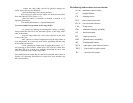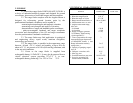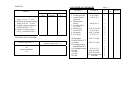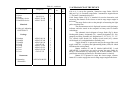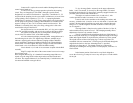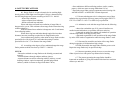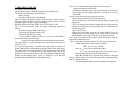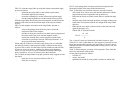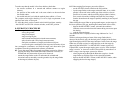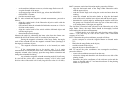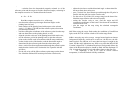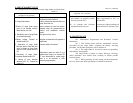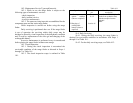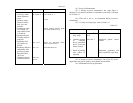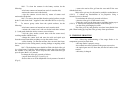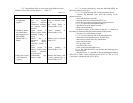
To make sure that the needle is free from defects, check that:
- the needle oscillates in a smooth and uniform manner to regain
balance;
- the position of the needle end is the same relative to the mark when
the needle settles;
- the needle ends are level with the marked plates within ± 0.5 mm.
The compass needs triple checking. If even a single requirement is not
satisfied, turn in the AI for repair.
7.7. After the check, set the controls to their initial positions, namely:
- the ON-OFF and ILLUM. selector switches, to the OFF position.
8. OPERATING PROCEDURE
8.1. The range finder is designed to:
- survey the ground;
- range fixed targets;
- range moving targets;
- take azimuth and magnetic azimuth measurements;
- take elevation and vertical angle measurements;
- find polar coordinates of targets and reference objects;
- convert the polar coordinates of the target and reference object
into rectangular coordinates, and find the target and observation post
coordinates from the predetermined reference coordinates.
8.2. To use the range finder for ground surveillance, proceed as follows:
- gripping the range finder with both hands, Binocular it coarsely in
azimuth and elevation on the objects to be observed;
- mount the range finder on the AI and rotate the azimuth and
elevation knobs to smoothly scan the ground or lay the range finder
on the target (reference object).
-
8.3. When ranging fixed targets, proceed as follows:
- set the ON-OFF selector switch to the ON position;
- lay the range finder on the target so that the latter, or its visible
portion is observed in the central gap of the reticle as close as
possible to its centre, and the screening objects (that is, bushes,
trees, terrain elevations, buildings and such like closer-range
features located near the target or partially masking it) are beyond
the gap.
When aiming the range finder at open-ground targets, see the target in
the lower portion of the gap, touching the bottom mark of the reticle;
- depress the MEASURE 1 button, wait until the readiness
indicator comes on and release the button taking care not to upset
the aiming;
- read the measured range.
The measured value is displayed in the range indicator for 3 to 5
seconds.
With several targets being on beam of the range finder (that is,
observed in the reticle gap), the decimal point is displayed in the least
significant digit position of the range indicator. In this event, the range
finder may be used as aimed, to range the first or the last target by
depressing the MEASURE 1 or MEASURE L button respectively.
If practicable, repeat the target ranging once or twice. If the obtained
range is correct, at least two results will not differ by more than 5 m.
8.4. To range a moving target, proceed as follows:
- observing the target through the Binocular eyepiece, aim the
range finder to track the target in elevation and azimuth;
- depress the MEASURE 1 button (or MEASURE L button, when
engaging the last-in-range target);



